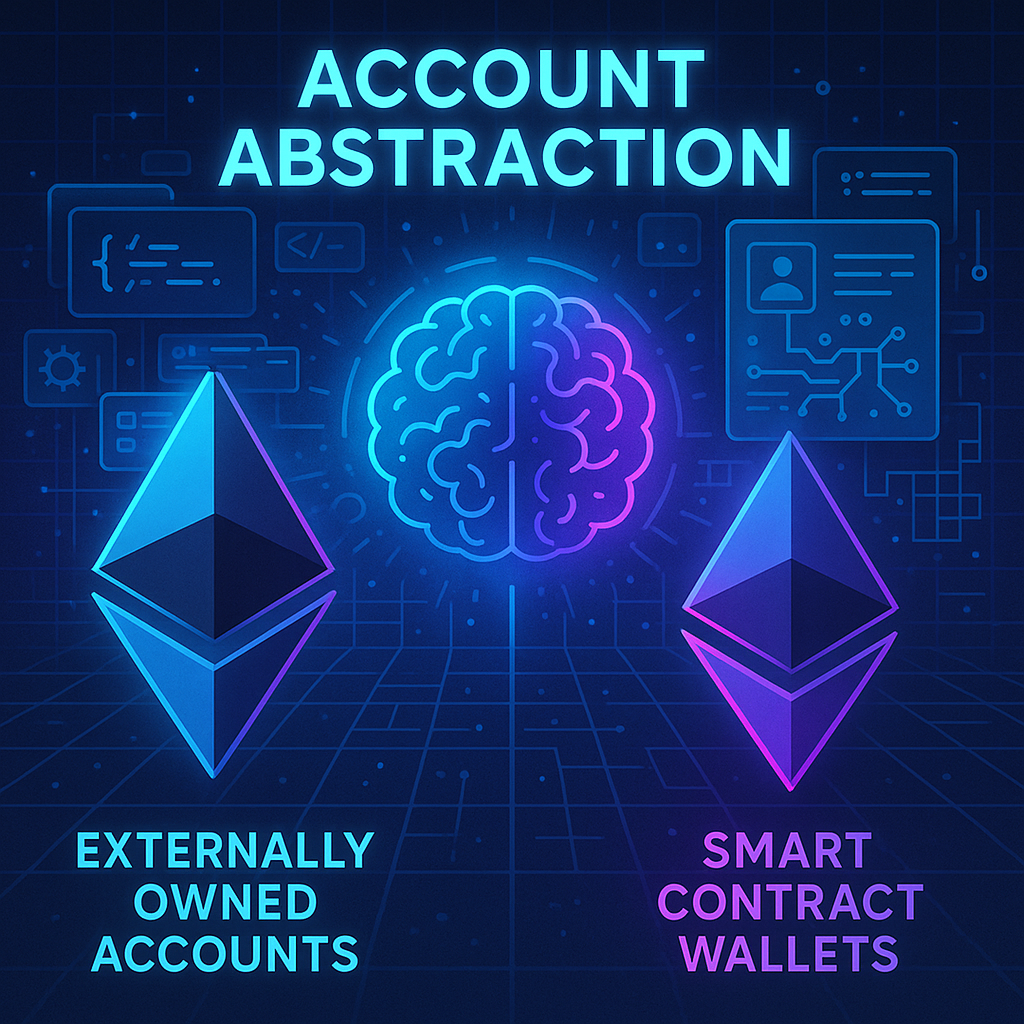Ethereum keeps pushing blockchain tech forward, and one of its coolest updates is Account Abstraction. The name might sound complicated, but the concept is pretty straightforward — and game-changing. For developers, it opens up new ways to make decentralized apps more flexible and user-friendly.
Let’s break down what account abstraction means how it works, and why it matters to you as a developer.
🔍 First, What Are Ethereum Accounts?
Ethereum has two main types of accounts:
- Owned Accounts (EOAs): These are standard user wallets, which a private key controls (like MetaMask).
- Smart Contract Accounts: These are code snippets on the blockchain that can execute functions and store funds.
EOAs can start transactions. Smart contracts can’t send one unless something interacts with them first.
💡 What Is Account Abstraction?
Account Abstraction (AA) aims to eliminate the clear division between EOAs and contract accounts. Instead of depending on basic wallets that private keys control, Ethereum users could use smart contract-based wallets — making their accounts customizable and programmable.
Picture a wallet that can:
- Sign off on transactions without manual approval
- Divide payments
- Allow another person to cover your gas costs
- Get back in if you misplace your device
This shows the capability of account abstraction.
🔧 How Does It Function?
Account abstraction is being rolled out through a standard called ERC-4337. Here’s a simple breakdown of how it operates:
- Instead of sending a regular Ethereum transaction, the user signs a “UserOperation”.
- A special node known as a “Bundler” picks up this signed request and submits it to the blockchain.
- A unique smart contract called EntryPoint handles the request, checks its validity, and runs the logic set in the user’s smart contract wallet.
The great thing about this system is that it doesn’t need changes to Ethereum’s core, so it’s already up and running on mainnet today.
🚀 How Developers Benefit
Account abstraction is a big deal for developers. Here’s why:
1. Custom Wallet Logic
Create wallets with your own rules: add PINs, biometrics, time locks, or parental controls.
2. Flexible Gas Payments
Users can pay fees with tokens other than ETH, or even have someone else (a “paymaster”) cover the cost.
3. Batch Transactions
Let users do multiple things at once — like approving and swapping tokens — without a bunch of popups.
4. Social Recovery
Create reliable recovery options to help users regain access to their wallets without depending on seed phrases.
🌍 Real-World Use Cases
Imagine you’re developing a gaming app. Smart wallets can handle user moves behind the scenes eliminating the need for users to sign every action. If you’re building a DeFi tool, you can group approvals and swaps to create a smoother experience.
Simply put: say goodbye to awkward UX that puts off newcomers.
⚠️ What Developers Should Keep in Mind
, a few points still need consideration:
- Tools are still developing — not all wallets or libraries fully support AA at this point.
- Bundlers are recent — you need to find trustworthy providers or set up your own.
- Safety is crucial — because these wallets rely on code, glitches or weaknesses can be dangerous.
Even so more people are using them, and the system is growing up fast.
